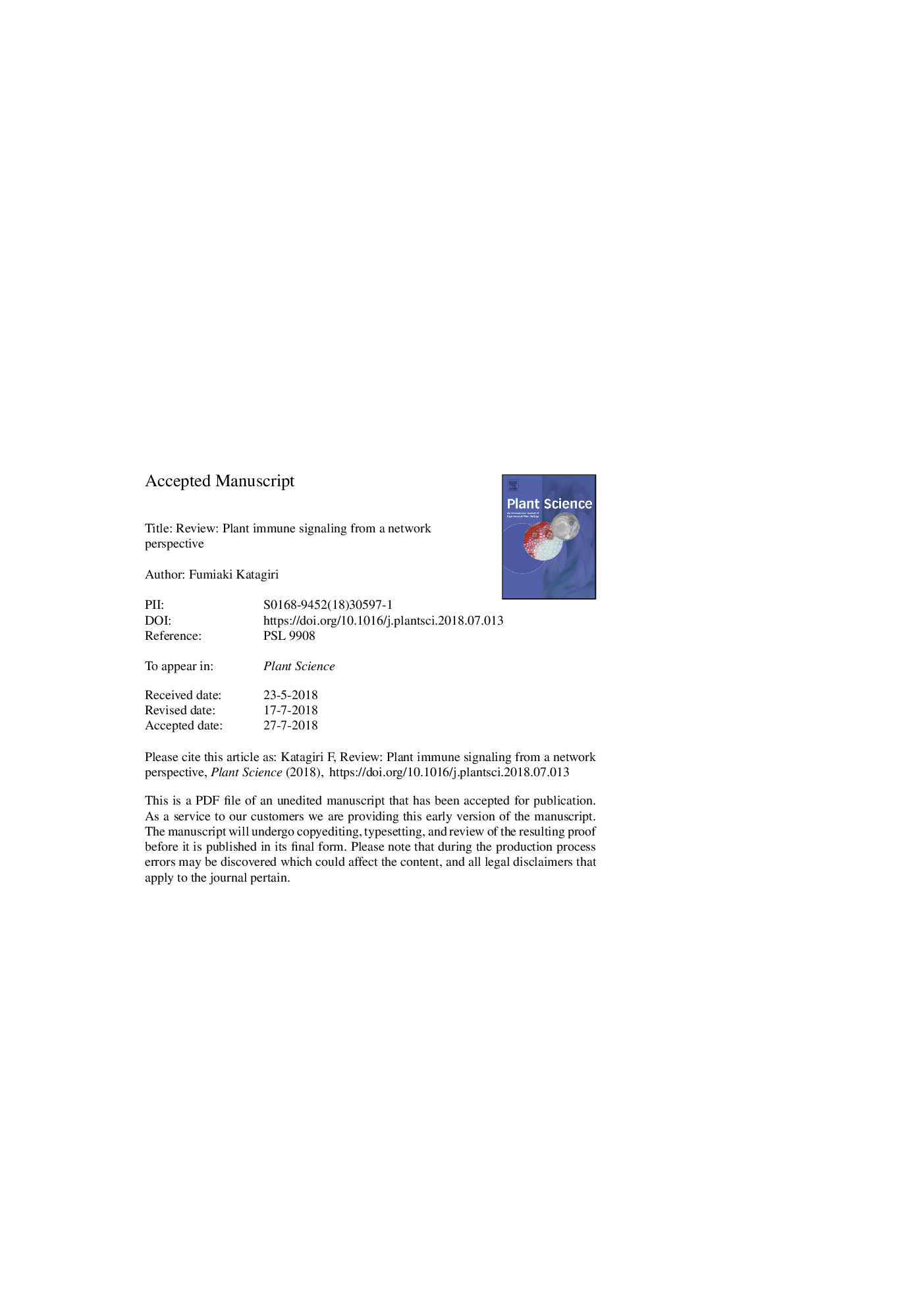| Article ID | Journal | Published Year | Pages | File Type |
|---|---|---|---|---|
| 8356052 | Plant Science | 2018 | 27 Pages |
Abstract
For predictive biology of a large and complex network, important mechanistic information consists of network topology, signal-convergence rules, and signal dynamics. In practice, the key to enabling predictive modeling of a complex network is reducing it sufficiently to allow modeling without omitting important factors affecting network behavior. Here I argue that the plant immune signaling network must have high levels of resilience and tunability based on the fundamental facts that plants are evolutionarily disadvantaged relative to microbial pathogens and that unnecessary immune response is bad for plants. By reducing the middle part of the immune signaling network to a four-sector network, we previously showed that the middle part indeed has high levels of resilience and tunability and from what signaling strategies the network properties emerge. The ability to comprehensively reconstitute the reduced network enabled a reductionist approach to a resilient network, which was crucial for revealing signaling mechanisms concealed by network resilience. However, this four-sector network may be reduced too much to make a predictive model with relatively simple signal-convergence rules and probably requires deconvolution to generate a highly predictive network model with a set of simple signal-convergence rules.
Related Topics
Life Sciences
Agricultural and Biological Sciences
Plant Science
Authors
Fumiaki Katagiri,
